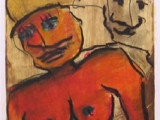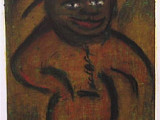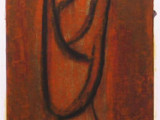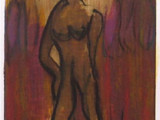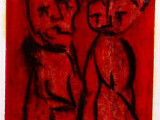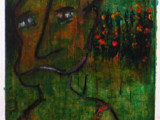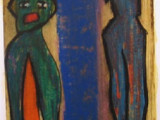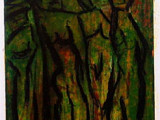Figurative Abstract
In 2007, I researched what was written on figurative abstract paintings, as in 2001 I completed a series of figuartive abstract works on paper that remained without a written description of its meaning. When I say “researched” I mean I used Google ™ to see what was written on figurative abstract painting. Much came on my screen but all seemed to be of little consequence. One article in the Christian Science Monitor by Carol Strickland was of interest as it reminded me of the time when I returned to my easel painting efforts in the late 1980’s, recognizing once again, how it seemed that painting was dead. Strickland was commenting on a contemporary show [2004] at the Brooklyn Museum of Art, selected by Charlotta Kotik and her curators, from thousands of submissions. Some 198 were shown, works in oil, acrylic, and watercolor. Strickland quotes Kotik as pronouncing, “Suddenly painting is allowed to exist again”.
“In the past two decades,” Strickland writes, “ the halls were chockablock with installations, photo-based work, conceptual art, new media, and digital & video art.” I can remember that along with Joseph Kosuth’s glib declaration that “painting was dead’ were the many pundits who likewise expressed similar opinions from the 1960’s onwards. Painting in Ibiza, Spain in the late 1950’s I felt the same way, even if the New York school, or crowd, like Pollock, etc, were making a big ‘name,’ ‘splash,’ or ‘drip’ for themselves and making “new” art sell, you couldn’t help feeling that as a painter on canvas that you were one of a dying group. The disenchantment years continued for me as I ploughed on with my life, in and out of my passion—painting—until about 1985 when I dedicated myself to painting fulltime. Strickland [commentary 2004] sees the ‘new painting’; “whether narrative, figurative, abstract, decorative, or somewhere in between—aims to trace a middle path between highbrow and low.”
My series “ Figurative Abstract”: done in 2001; remained without a title until 2007.
The series is not without content, veiled as it is. Working at that time in Mexico using chapapote (tar) and spray enamels was unique. As far as I know I am the only artist that has been able to harness chapapote so it didn’t come out as “oil”, “petrochemicals”, and manufactured products such as enamels as colors.
The tone in “Figurative Abstract” somewhat ‘dark’, the figures stick-like, the colors more or less monochromatic, with a strong line deliberating the figure–motionless–caught in the “tar”–restrained, held back from realization.
©Roland Salazar Rose 2007
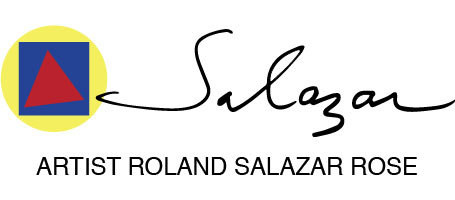 Salazar
Salazar